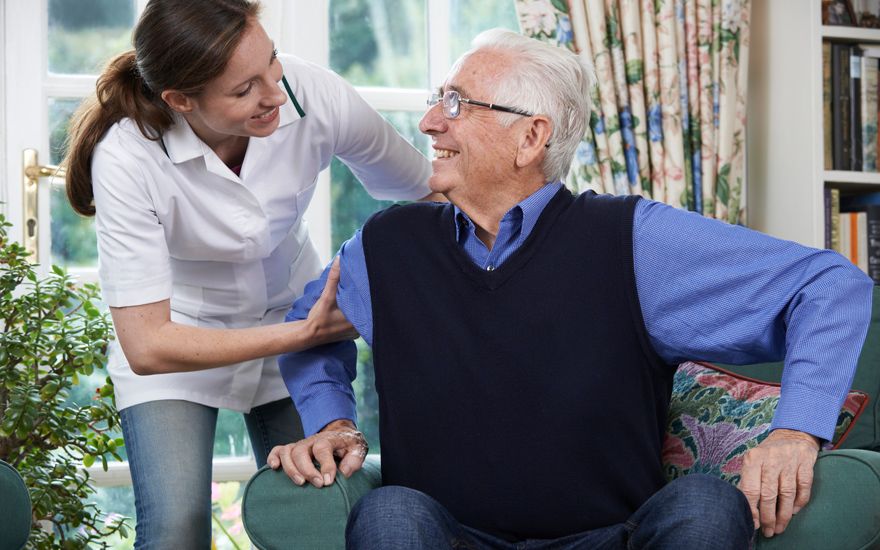6 Exercises to market Balance THAT CAN BE DONE in the home
Falls are normal in people over 65 years. A fall can lead to undesired outcomes, including injury, lack of independence, and reduced ability to do things that are nearly all important for you. They also can lead to death.
Based on the Centers for Condition Control and Prevention, 3 million older adults are usually treated in the er for fall injuries every year. The average healthcare cost per drop will be $35,000.
The good thing is falls are usually preventable. Balance training can be an essential and effective section of drops prevention. Performing safe house exercises might help strengthen your lower torso to market balance and lessen your overall drop risk, among some other health benefits. Based on the Journal of the American Geriatrics Society, exercise, including exercise, reduces drops by 13% to 40% in community‐dwelling older adults.
A physical therapist can evaluate balance and suggest appropriate exercises which are tailored to your unique needs and goals and so are safe so that you can perform in the home. Physical therapists are usually movement experts who enhance standard of living through hands-on care, patient education and learning, and recommended movement.
Here are a few exercises your physical therapist might recommend:
Check with your doctor before beginning a house workout program. For safety of these exercises, place yourself near a countertop or sturdy surface which you can use for support.
1. Standing March
Standing up near a sturdy assistance, begin marching set up slowly for 20-30 seconds. As this gets easier, your physical therapist may challenge balance and change up the pace and surface you’re marching on: from hardwood to carpet, foam pad, grass, etc.
2. Standing 3-Method Kicks
Sitting on 1 leg (with a soft, unlocked knee), slowly increase your additional leg out before you. Keep your expanded leg as directly as you possibly can and return it to the guts. Then gently lift exactly the same leg out aside and back again down, and then expand your leg behind the body and back off. Perform as much as you can each method. Your physical therapist may raise the difficulty of the exercise by detatching the helping surface.
3. Sidestepping
Dealing with a countertop or wall (together with your practical the counter or wall for assistance as needed), action sideways in 1 path together with your toes pointed direct ahead and soon you reach the finish of the wall or counter. Then, come back in another direction. As this gets easier, a physical therapist may add the usage of a resistance band at the knees or simply above the ankles.
4. 1-Leg Stand
Stand on 1 leg so long as you are usually able, around 30 seconds. Be sure you stay near a sturdy assistance surface that you could hold on if required. Alternate legs and make an effort to do that 3-5 times on each leg. As this gets easier, challenge yourself by performing various other tasks while sitting on 1 leg, such as for example brushing your teeth, speaking on the telephone, or while carrying out the laundry. Balance exercises can simply be built-into your daily routine in this manner.
5. Sit down to Stand and Stand to Sit down
Rise out of a chair without needing your arms to push up. If that is difficult initially, place a company pad underneath you on the chair seat to improve you. As you go back to a seated placement, slowly lower yourself completely back off and ease into your seat (instead of dropping in to the chair). Perform as much times when you are able. This may easily be completed while you’re watching TV.
6. Heel-to-Toe Position or Walking
Place 1 foot directly while watching other, therefore the heel of leading foot touches the toe of the trunk foot. Hold this place so long as you can, or around 30 seconds. As this gets easier, try going for a few steps in this heel-to-toe format, just like you are strolling on a good rope. Be sure you use something to carry to for safety.
Many factors can donate to too little balance and dropping. Older adults, especially those people who have encountered dizziness, stumbling, or drops, should get yourself a comprehensive evaluation from the PT or another experienced doctor. Some physical therapists focus on balance and falls administration.
It is possible to contact a physical therapist straight for an evaluation. To locate a physical therapist in your town, visit Look for a PT.
